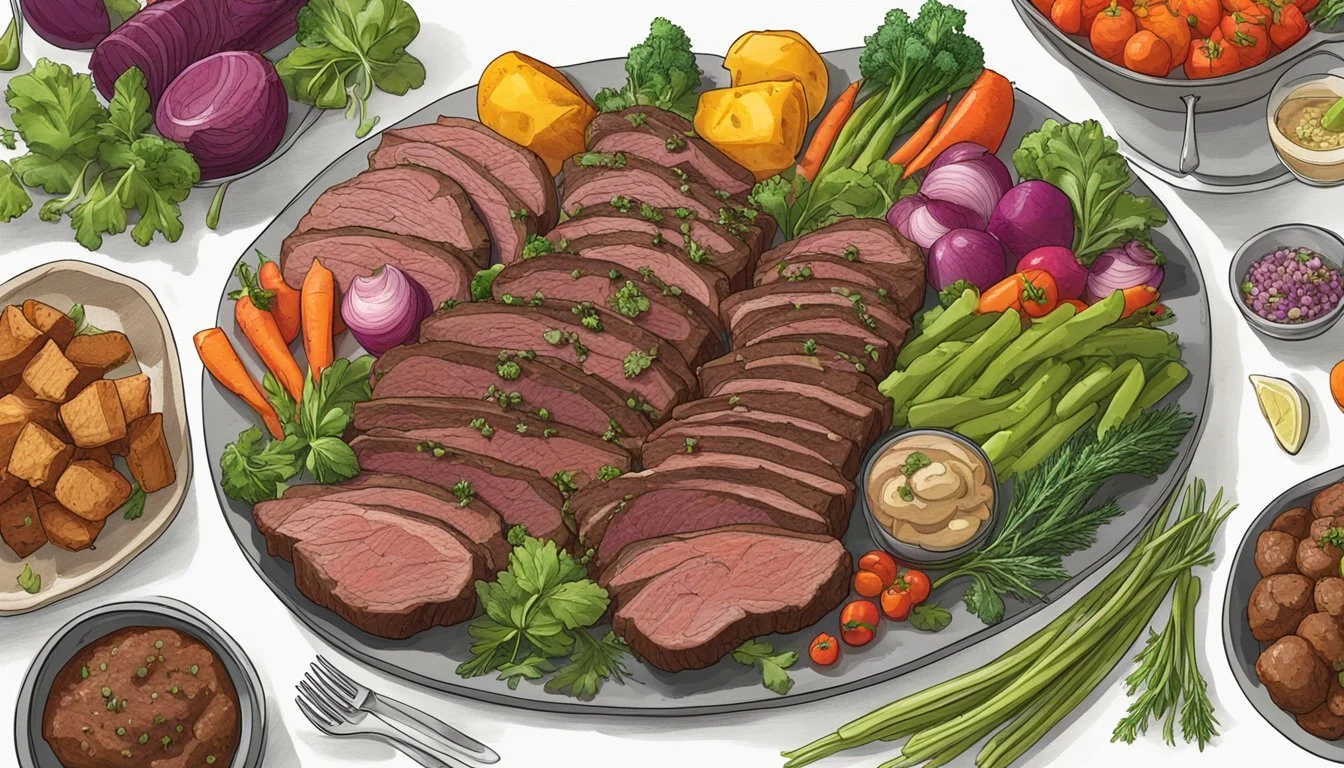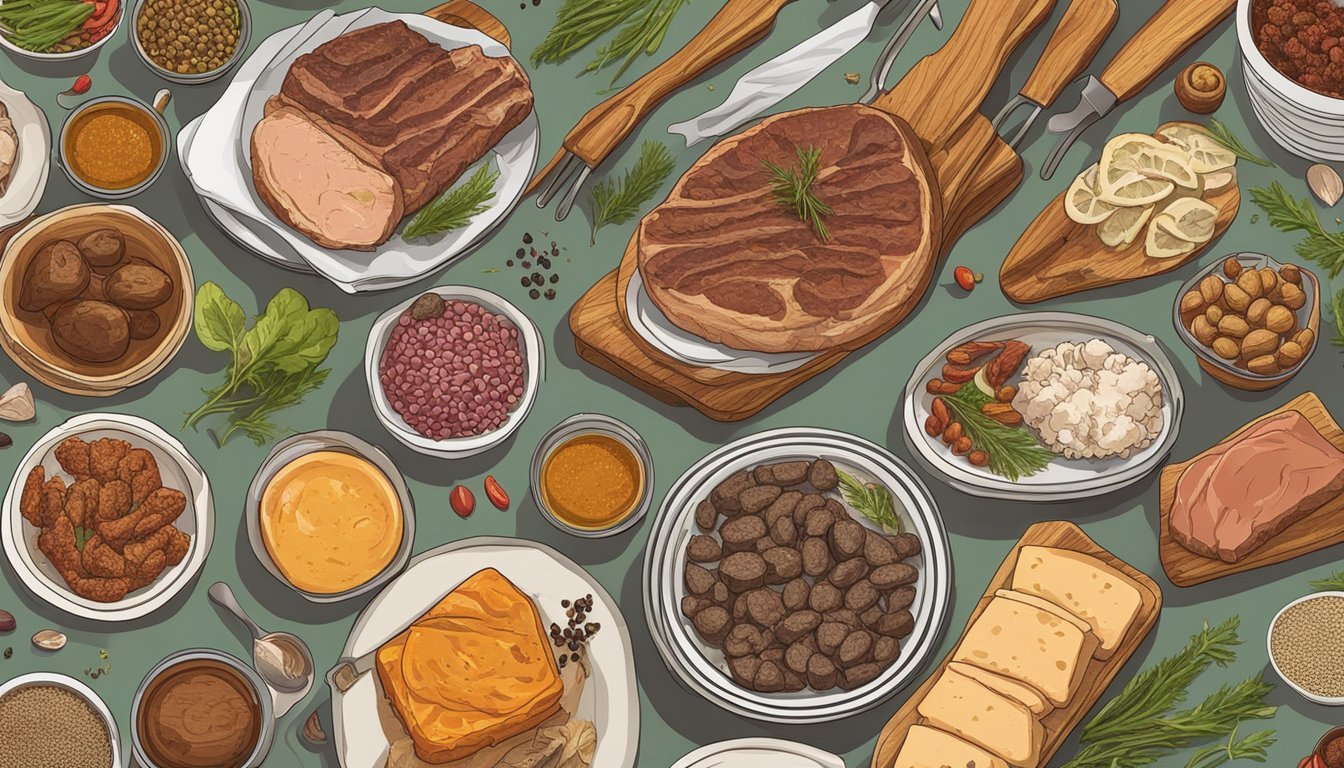7 Ways to Add Variety to Your Carnivore Diet
Expert Tips for a Balanced Approach
The carnivore diet, focused primarily on consuming animal products, offers a unique nutritional approach for health enthusiasts. While often centered around meats like beef and pork, this diet can incorporate other varieties to maintain interest and nutritional balance.
For anyone considering the carnivore diet, finding ways to introduce variety can keep meals enjoyable and nutritionally diverse. This article will explore different strategies to add both flavor and variety, making the carnivore diet more sustainable and enjoyable in the long run.
1) Grilled Bone Marrow
Grilled bone marrow can be a flavorful addition to a carnivore diet. High in quality protein and fat, bone marrow delivers essential nutrients such as collagen, glycine, glucosamine, and vitamin K2.
To prepare, preheat the grill to medium-high heat. Arrange the bone marrow slices on a grill-safe tray or directly onto the grill.
Grill the marrow bones for about 10-15 minutes. Turn them occasionally to ensure even cooking. Look for the marrow to become soft and slightly caramelized.
Grilled bone marrow can be served directly from the bone or scooped out and spread on a piece of meat. Some may prefer a smoky touch by grilling, enhancing the dish’s natural flavors.
Bone marrow can also be combined with grilled meats, such as a ribeye steak, for a rich and nutritious meal. Seasoning sparingly with salt and pepper allows the natural flavors to shine.
This dish offers a unique way to diversify meals while adhering to a carnivore diet. It’s a simple yet delicious option packed with beneficial nutrients.
2) Seared Beef Heart
Seared beef heart is a nutritious and flavorful addition to a carnivore diet. Beef heart is rich in essential nutrients like iron, zinc, and several B-vitamins. It also has a unique texture and flavor that can be quite appealing when prepared correctly.
Beef heart is an economical option, often costing between $2 to $5 per pound. This makes it a great choice for those looking to incorporate more nutrient-dense foods without spending a lot. Local farmers markets or grocery stores may offer this cut.
To prepare seared beef heart, start by trimming any excess fat and fibrous tissue. Slice the heart into thin, manageable pieces. Season with salt and pepper or any preferred spices. Heat a pan over medium-high heat and add a bit of cooking oil or fat.
Sear the beef heart slices for about 2-3 minutes on each side. The goal is to achieve a nice caramelized exterior while keeping the interior tender. Serve it immediately for the best taste and texture.
Adding seared beef heart to your meal rotation can introduce new flavors and ensure a diverse nutrient intake. This method is simple and effective for anyone following a carnivore diet.
3) Lamb Liver Pâté
Lamb liver pâté is a nutrient-dense addition to the carnivore diet. Lamb liver is rich in essential vitamins and minerals, such as vitamin A, B12, and iron. These nutrients support overall health and well-being.
To prepare lamb liver pâté, start by selecting fresh, high-quality lamb liver. Trim any excess fat and connective tissue before cooking.
In a hot pan, melt sufficient animal fat like beef tallow or butter. Add chopped onions and garlic for added flavor, sautéing until they become translucent.
Add the lamb liver slices to the pan. Cook them until evenly browned but still slightly pink inside. Overcooking can make the liver tough.
Allow the liver mixture to cool slightly, then blend it with softened butter until smooth. This creates a creamy, rich texture, enhancing the pâté's palatability.
Season the mixture with salt and pepper to taste. Optional additions like herbs or spices can be used to suit personal preferences, but keep it carnivore-friendly.
Transfer the finished pâté to a container and refrigerate. It can be served chilled, paired with slices of cooked bacon or as a spread on thin pieces of beef jerky.
Incorporating lamb liver pâté into the diet provides a flavorful, nutritious option, perfect for those seeking variety without straying from carnivore principles.
4) Smoked Pork Belly
Smoked pork belly brings a delicious and flavorful twist to the carnivore diet. It's a great way to enjoy tender meat with a rich, smoky flavor.
To prepare smoked pork belly, start by selecting a high-quality cut. For the best results, opt for pasture-raised or wild boar pork belly.
The smoking process begins by seasoning the meat. Simple spices like salt can enhance the natural flavor without overshadowing it.
Preheat your smoker to about 225°F. Place the pork belly inside and let it smoke for approximately 3-4 hours. This slow smoking process allows the fat to render, making the meat tender.
Keep the pork belly moist by occasionally spritzing it with water or broth while it smokes. This ensures the meat retains its juiciness.
Once the smoking is complete, let the pork belly rest for a few minutes. This rest period allows the juices to redistribute throughout the meat.
Serve the smoked pork belly sliced or in bite-sized pieces for a delectable carnivore diet-friendly meal. This dish is perfect for those who enjoy robust flavors and is a satisfying addition to your carnivore repertoire.
5) Carnivore Fat Bombs
Carnivore fat bombs are a fantastic way to add variety and increase fat intake on a carnivore diet. These small, calorie-dense snacks can be easily customized to suit individual preferences and dietary needs.
Using ingredients like tallow and butter can enhance the flavor. Tallow, in particular, provides a rich and savory taste that pairs well with various meats.
To prepare fat bombs, mix melted butter and tallow together. Form the mixture into small balls or shapes and freeze them until solid.
Adding unsweetened dairy, such as kefir or full-fat Greek yogurt, can introduce probiotics and a creamy texture. For those who tolerate dairy, these additions can make fat bombs more interesting.
Some recipes also include elements like beef mince. By incorporating cooked mince into the fat bomb mixture, one can create a heartier snack.
Another popular method involves searing or frying small pieces of fat until crispy. This can add an enjoyable crunch to the carnivore fat bombs.
These snacks are convenient for quick energy boosts or as part of a meal. They help maintain energy levels while staying within the carnivore dietary guidelines.
Enjoy experimenting with different flavors and textures. By doing so, one can discover the perfect combination that fits their taste and nutritional goals.
6) Venison Steaks
Venison steaks offer a flavorful and lean option for anyone following a carnivore diet. The meat is rich in protein, with minimal fat and zero carbohydrates, making it an excellent choice for maintaining a balanced meat-based diet.
To prepare venison steaks, grilling is a popular method. Grill the steaks for about 5-6 minutes per side, or until they reach your preferred level of doneness. The key is to avoid overcooking, as venison can become tough if cooked for too long.
For added flavor, marinate the steaks in a mix of olive oil, garlic, and rosemary. This simple marinade enhances the natural taste of the venison without overpowering it. When ready, sear them on high heat to lock in the juices before finishing at a lower temperature.
Another option is to pan-sear venison steaks. Heat a cast-iron skillet, add some butter or tallow, and cook the steaks for 3-4 minutes on each side. This method allows for a nice crust while keeping the inside tender and juicy.
Venison steaks can be served with a side of sautéed mushrooms or topped with a dollop of herb butter to complement the flavors. This versatile meat can elevate your carnivore diet with its unique taste and nutritional profile.
7) Bone Broth Soup
Bone broth soup is a great addition to the carnivore diet. Rich in collagen, gelatin, amino acids, and minerals, it supports joint health, gut function, and skin vitality.
To prepare, preheat the oven to 400 degrees Fahrenheit. Roast bones on a baking sheet for added flavor. You can add vegetables like onions, carrots, and celery if desired.
Simmer the roasted bones in water. Optional vinegar can be added to help extract nutrients from the bones. Maintain a low temperature to simmer for about 24 hours for beef bones, and 12 to 18 hours for chicken bones.
Skim any foam that rises during the first two hours to ensure a clear broth. This simple method yields a nutrient-dense, versatile broth perfect for sipping or as a base for dishes.
Nutrient Diversity
To ensure a well-rounded carnivore diet, it is crucial to focus on nutrient diversity. This includes maintaining a balanced intake of vitamins and ensuring adequate mineral consumption to support overall health.
Importance of Vitamin Balance
Maintaining a balance of essential vitamins is vital in a carnivore diet. Vitamin A from liver aids in vision and immune function. Vitamin D, often obtained from fatty fish or sunlight, supports bone health and immune response. B vitamins from meat, particularly B12, are critical for energy production and neurological function.
A lack of dietary fiber on this diet makes obtaining Vitamin C essential to prevent deficiencies, which can be acquired from organ meats or certain fish. Prioritizing a diverse range of animal foods ensures a comprehensive vitamin profile, reducing the risk of potential deficiencies.
Role of Minerals in a Carnivore Diet
Minerals play key roles in bodily functions, making their presence in the diet indispensable. Iron, found abundantly in red meat, is essential for oxygen transport and energy metabolism. Magnesium, present in fish and bone broth, supports muscle and nerve function.
Zinc from shellfish and red meat aids in immune health and metabolic function. Sodium and potassium, crucial for electrolyte balance, are derived from various meats and organ products. To avoid imbalances, adequate mineral intake from a variety of animal sources is necessary for optimal health.
Incorporating organ meats, seafood, and a variety of meats can help meet these mineral needs effectively.
Customizing Your Meals
Customizing your meals on a carnivore diet can greatly enhance your dining experience. By incorporating different meats and using animal fats creatively, you introduce variety and ensure balanced nutrition.
Incorporating Different Meats
Variety in meat choices is essential. Consuming a mix of beef, pork, chicken, and seafood provides a wider range of nutrients. For example, beef is rich in iron, while fish is high in omega-3 fatty acids. Rotating these meats prevents monotony and keeps meals interesting.
Consider adding organ meats like liver and kidney, which are nutrient-dense and flavorful. Experiment with different cooking methods such as grilling, roasting, and slow-cooking to bring out the best in each type of meat. Incorporating various cuts, like ribeye, sirloin, or belly, also adds texture and flavor to your meals.
Using Animal Fats Creatively
Animal fats are a cornerstone of the carnivore diet. Using fats like beef tallow, lard, and duck fat can keep meals rich and satisfying. These fats can be used for frying, roasting, or as a base for sauces. For instance, beef tallow makes excellent frying oil, adding depth to the flavor of meats and vegetables.
To add complexity, create compounds by blending herbs and spices into softened fats. For example, butter mixed with garlic and herbs can be used to season steaks or enhance the flavor of chicken. Incorporating bone marrow into dishes adds a creamy texture and additional nutrients, making meals more indulgent and nutritious.
Practical Tips for Adding Variety
Adding variety to a carnivore diet doesn't have to be challenging. Here are practical tips to keep the meals exciting and nutritionally balanced.
1. Mix Different Cuts of Meat
Experiment with different cuts of beef, pork, lamb, and poultry. Each cut has its unique flavor and texture.
Organ meats such as liver, kidney, and heart are nutrient-dense and add variety. These can be cooked in various ways like pan-frying or slow-cooking.
Utilize butter, tallow, lard, and duck fat for cooking. These fats enhance the flavor and provide necessary nutrients.
4. Supplement with Fish and Seafood
Fish like salmon, mackerel, and sardines, as well as shellfish like shrimp and crab, are excellent for adding variety and nutrient richness, especially Omega-3 fatty acids.
5. Try Dairy in Moderation
Full-fat cheeses, butter, and heavy whipping cream can be added, staying within the low-lactose spectrum. Always monitor how your body responds to dairy.
6. Experiment with Cooking Methods
Grilling, roasting, slow-cooking, and smoking meats offer different textures and flavors. Rotating cooking methods can make meals more interesting.
7. Add Simple Seasonings
Salt is a staple, but other simple seasonings like black pepper, garlic powder, and herbs can add new dimensions to the diet. Keep it minimal to stay true to the carnivorous principles.
By focusing on these seven strategies, one can enjoy a diverse and satisfying experience on the carnivore diet.










